Utopia or cacotopia?
19 August 2011 | Extracts, Non-fiction
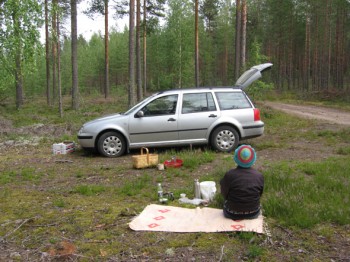
Viljakansaari, Finland, 2008. ©Merja Salo
Do we live in the age of autopia, and if we do, what does that mean? On this earth there are now perhaps 800 million cars, all vital to our modern lifestyles. Professor and photographer Merja Salo observes landscapes through her camera with this question in mind
Extracts and photographs from Carscapes. Automaisemia (Edition Patrick Frey & Musta Taide, 2011. Translation: Laura Mänki)
The car may be the vehicle for the everyman, but not every man is a good driver. According to Hungarian- born psychoanalyst Michael Balint, good drivers have the psychological structure of philobats. With their sense of sight, they perceive space well and control it by steering their vehicle skilfully. Ocnophiles, on the other hand, are more at home as passengers. They structure the world through intimacy and touch. When driving, they cling anxiously to the steering wheel and do not perceive the continously changing situations in traffic.
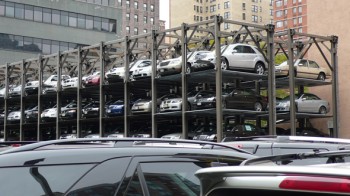
New York, USA, 2008. ©Merja Salo
Introduced in 1908, the Ford Model T turned the car into an industrial product whose price fell nearly to a third of the original in 20 years. The car became a symbol of modern life, speed and mobility. Since the oil crisis in the 1970s, the car has also become a symbol of environmental destruction. Today, limited oil resources, traffic accidents, emissions and other environmental effects are seriously overshadowing the joy of driving.
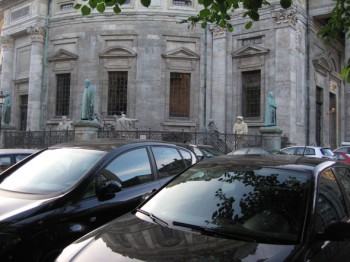
Copenhagen, Denmark, 2007. ©Merja Salo
The car stands for speed and freedom. Cars realise what the French philosopher Paul Virilio calls dromology, the logic of speed and velocity. The modern world is characterised by ever-increasing speed, of which the various vehicles are symbols. Speed and velocity also influence the way in which we perceive and see scenery.
Photography with its technique has redrawn and brought to the fore the traces of speed. At slow exposure times, headlights are recorded on film as speed lines.
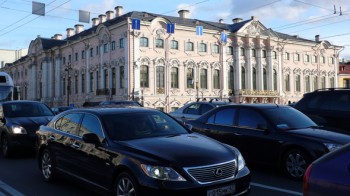
St Petersburg, Russia, 2009. ©Merja Salo
The flood of light created by traffic flowing on nocturnal city streets was already a symbol of modern life in the 1920s, when cars became common in the Western world.
In car advertisements, the photograph has fetishised the shiny metal and chrome.
As conquerors of the landscape, roads are also part of power politics. In the Germany of the 1930s, the building of the Autobahns was part of the Nazi regime’s Volks- motorisierung. Hitler, too, was a keen motorist: ‘I love the car. It has offered me the most beautiful moments of my life.’
Cars affect the landscape even when thay are not speeding down highways. In reality, cars stay put most of the time, parked somewhere: in the garage, in a parking lot, by the side of the road. In the United States, 30 to 50 per cent of a city’s are is being used by cars, with the figure reaching two thirds in Los Angeles.
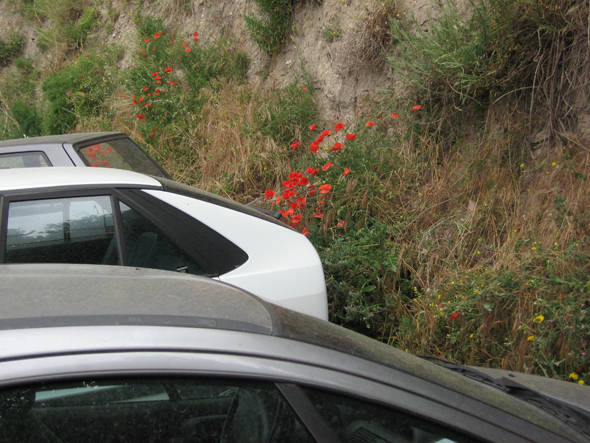
Assisi, Italy, 2006. ©Merja Salo
In Houston, the amount of asphalted parking surface per inhabitant equals 30 parking spaces. Annually, more than 600,000 hectares of farmland is engulfed by asphalt paving in the US countryside.
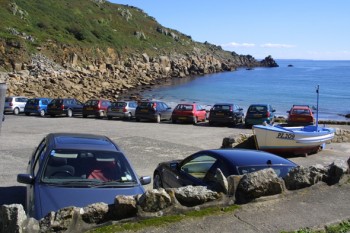
Cornwall, UK, 2005. ©Merja Salo
Parking affects the landscape at least as much as the road network does. It has altered the public space and architecture of cities. Cars fill up city squares and street space. To sum up the effect of parking on cities: form no longer follows function, fashion or even finance.
Carscapes is a collection of cars in a state of speedlessness: they have most obviously become part of the landscape – or they have started to produce their own landscape. A carscape.
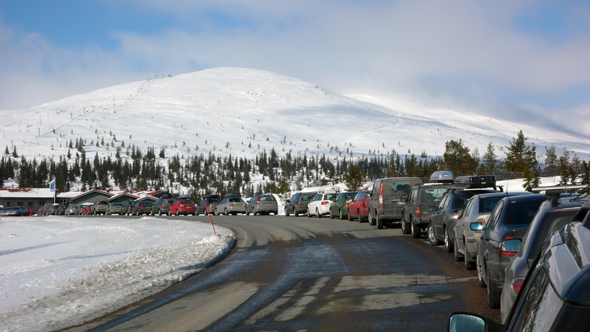
Pallas (Lapland), Finland, 2010. ©Merja Salo
In the spirit of Virilio, one could talk about dromotopoi, places and spaces created by speed. The places in which speed has come to a halt are a part of the topography of the motorised landscape.
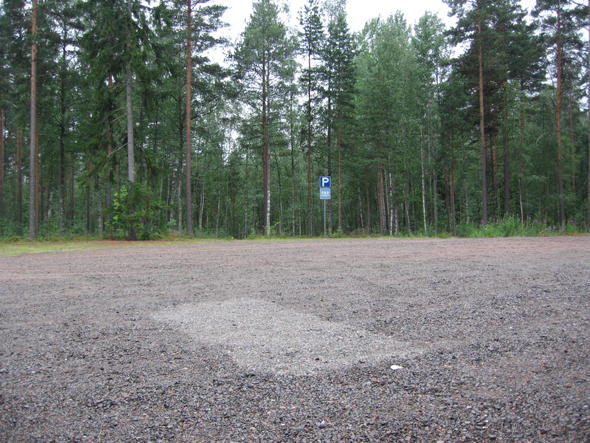
Valkeala, Finland, 2008. © Merja Salo
Tags: photography, travel
1 comment:

19 August 2011 on 5:12 pm
Excellent summary of the auto’s impact (though missed the class mobility discussion that also could’ve been made). Small suggestion: better photo selection/display to complement the visual aspects of the auto’s impact on city scapes as well as references to the visualization of speed/velocity.